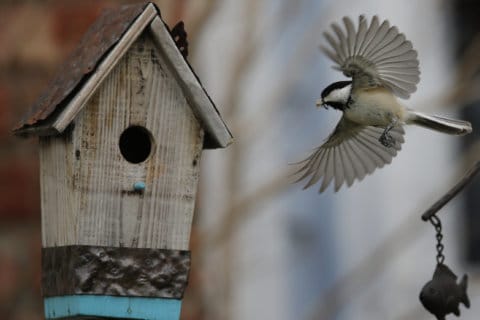Meet Mike next weekend in Chantilly! Mike will appear on Feb. 23 (at 4 and 6 p.m.) and 24 (at 2 p.m.) during the Capital Remodel & Garden Show at the Dulles Expo Canter in Chantilly! Hope to see you there!
Perennialize your potted posies
Did you get potted tulips for Valentine’s Day? If you treat them right, you can plant them outdoors for bloom next spring — and maybe many springs to come.
- Keep the plants in a cool spot for now to prolong the bloom.
- When the flower petals drop, clip off the little seed head that forms at the top of the stalk.
- Remove any decorative foil and sit the pot in water until the soil is saturated.
- Then put it in the brightest light you have. Outdoors would be ideal — just bring it back inside when nights are predicted to dip below freezing.
- Put the pots in a sunny spot outdoors for good in March and feed with a gentle, liquid organic fertilizer. The sun and food will grow next year’s flower inside each bulb.
- When the leaves turn brown, carefully cut them off and store the pots in a cool dry space until after Halloween.
- Then you can plant the bulbs directly in the ground …
- … Or you can “force them.”
- Water the pots well and place them in a “beer fridge” — one that will contain no fruits of any kind. Mark the date 14 weeks from then, bring them out of the fridge into bright light, water well and wish for tulips to emerge.
Grass under trees very hard to achieve
Mike in Vienna writes: “I have a very shaded back lawn (towering trees that I can’t trim back anymore). The grass in that area — turf-type tall fescue — is killed every year by moss that overtakes it in the spring and summer. I aerated and reseeded with a shade grass mix last fall, and it looks like I’m getting about 80 percent coverage so far. Is there anything I can put down or add to the soil to keep the moss at bay? Any suggestions would be greatly appreciated.”
Two things: That 80 percent coverage is with all the leaves off the trees; once that canopy fills in, your same old struggle will begin again.
That said, the moss is a sign that the soil is highly acidic as well as shady. To correct that, you would have a soil test performed and then spread lime or the ashes from a hardwood stove as directed to bring the pH up to between 6.5 and 7. It may not help the grass, but it would make things difficult for the moss.
Learning to love moss
Mike in Vienna has a very shady backyard dominated by towering trees and tries to grow grass every year, but moss always takes over. That moss is a sign of very acidic soil, so one thing Mike can try is to bring the pH back up to normal.
But if no sun gets through that canopy after the trees leaf out, no grass is going to be successful there; even the most shade-tolerant varieties of turf need four hours of sun a day. I suggest that Mike stop fighting nature and let the moss take over. It’s the natural ground cover for such a site; it never needs to be fed or cut; and it’s green all year. Moss lawns are all the rage right now, so you’ll also be trendy!
The many faces of moss
I could hear a few groans just now when I suggested that Mike in Vienna stop trying to grow grass on his densely tree-shaded backyard and embrace the moss that always takes over by summer.
This is not hippy-dippy stuff. Moss lawns have been used to great effect in Japanese gardens for untold millennia. Moss won’t harm the trees, stays green all year and never needs to be fed or cut — just watered during extended dry times.
Mike’s native moss seems very healthy, and I suspect it would fill in completely on its own if he stopped fighting it.
Interested parties with different conditions may want to visit the website of a company called Moss Acres. They offer four different varieties of moss, available in sheets — just like grass sod — and in powered form to be reconstituted and spread around.







